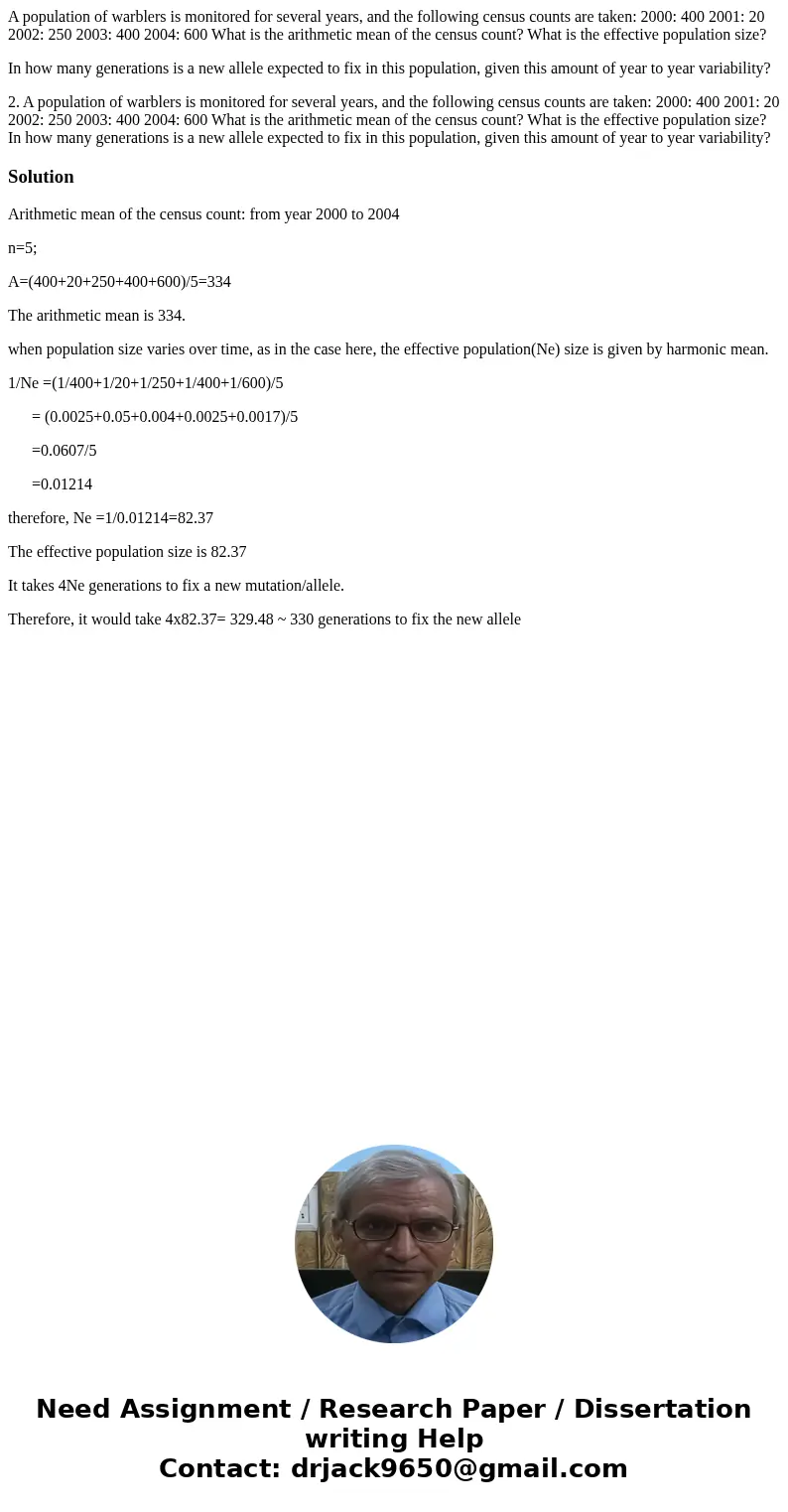A population of warblers is monitored for several years and
A population of warblers is monitored for several years, and the following census counts are taken: 2000: 400 2001: 20 2002: 250 2003: 400 2004: 600 What is the arithmetic mean of the census count? What is the effective population size?
In how many generations is a new allele expected to fix in this population, given this amount of year to year variability?
2. A population of warblers is monitored for several years, and the following census counts are taken: 2000: 400 2001: 20 2002: 250 2003: 400 2004: 600 What is the arithmetic mean of the census count? What is the effective population size? In how many generations is a new allele expected to fix in this population, given this amount of year to year variability?Solution
Arithmetic mean of the census count: from year 2000 to 2004
n=5;
A=(400+20+250+400+600)/5=334
The arithmetic mean is 334.
when population size varies over time, as in the case here, the effective population(Ne) size is given by harmonic mean.
1/Ne =(1/400+1/20+1/250+1/400+1/600)/5
= (0.0025+0.05+0.004+0.0025+0.0017)/5
=0.0607/5
=0.01214
therefore, Ne =1/0.01214=82.37
The effective population size is 82.37
It takes 4Ne generations to fix a new mutation/allele.
Therefore, it would take 4x82.37= 329.48 ~ 330 generations to fix the new allele

 Homework Sourse
Homework Sourse